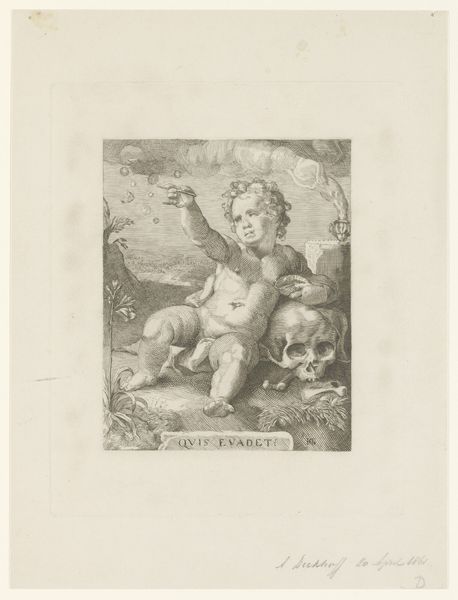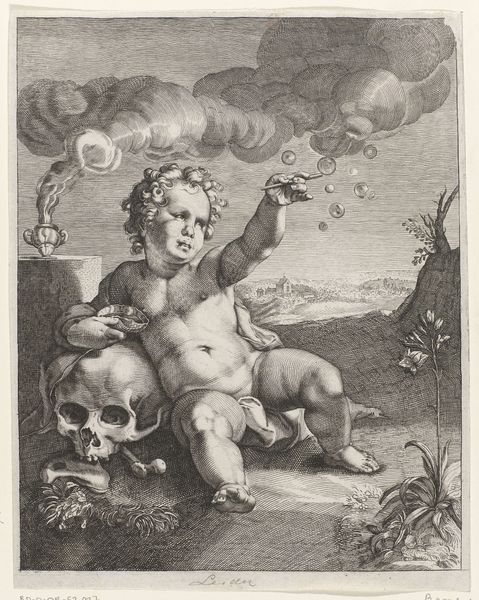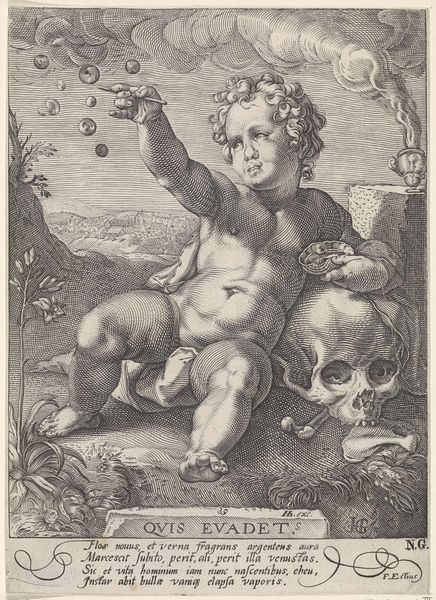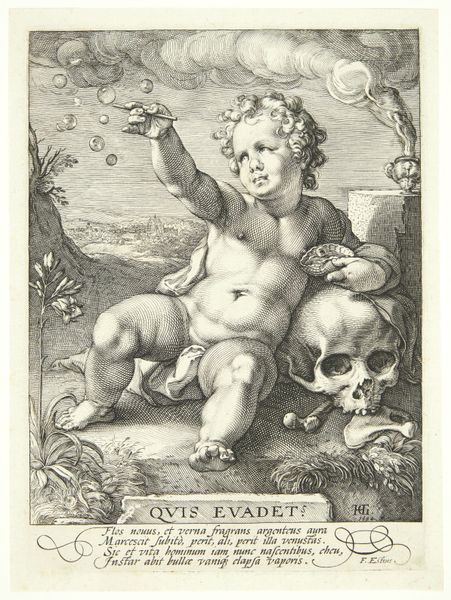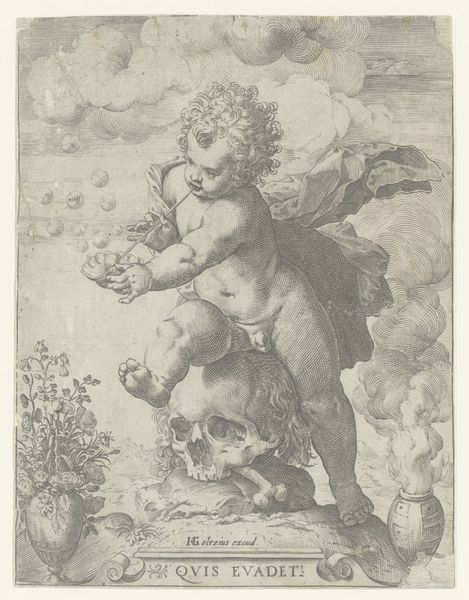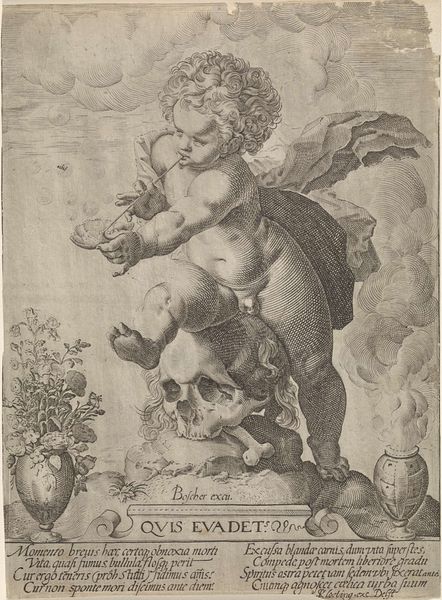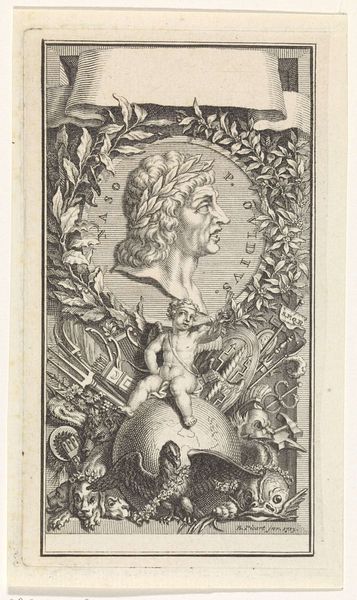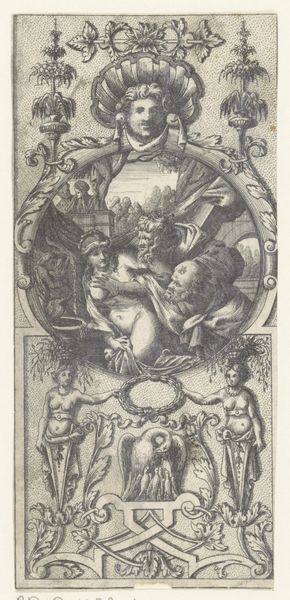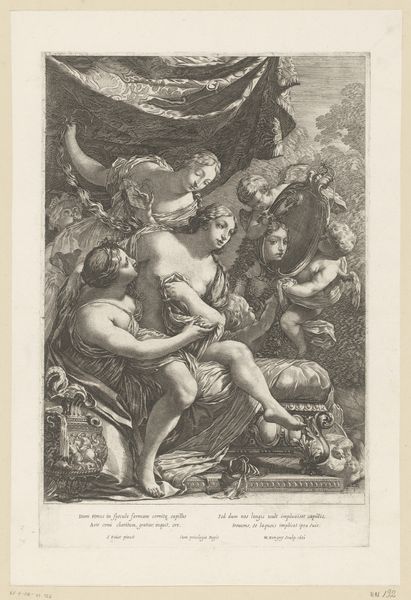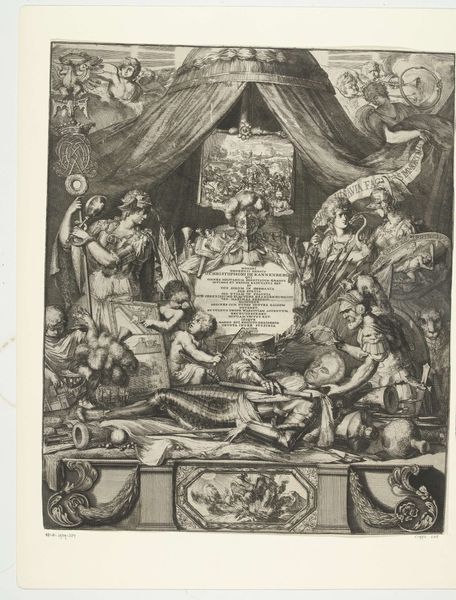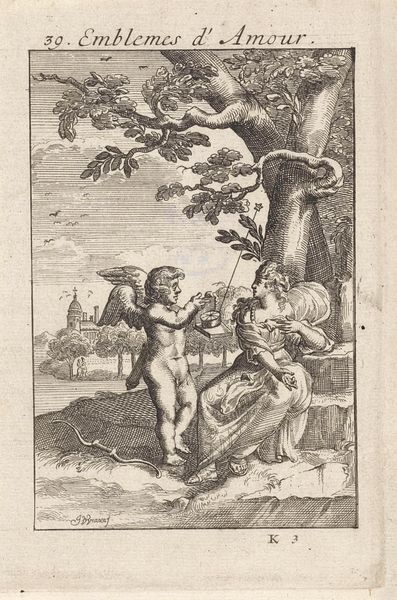
engraving
#
allegory
#
baroque
#
old engraving style
#
caricature
#
figuration
#
vanitas
#
surrealism
#
line
#
genre-painting
#
engraving
Dimensions: height 219 mm, width 174 mm
Copyright: Rijks Museum: Open Domain
Editor: So this engraving, "Allegory of Transience", its artist currently unknown and dated between 1594 and 1667, feels incredibly heavy, even though it depicts a child blowing bubbles. The skull really throws you, doesn’t it? How would you interpret this work, looking at it through a historical lens? Curator: Exactly, that jarring juxtaposition is key. Considering its context, likely the Dutch Golden Age, this piece actively participates in the *vanitas* tradition. Think about the rising merchant class, suddenly flush with wealth, yet constantly reminded by the church of earthly limitations. It becomes a public assertion of both success *and* the ever-present reality of death, doesn't it? What’s being "advertised" in this imagery and what institution might wish to deliver this message to the public? Editor: So, it's not just about personal mortality but also a kind of societal commentary? The bubble seems to represent not just brief human life but perhaps even economic bubbles and ephemeral wealth? Curator: Precisely! The engraving becomes a public declaration, staged with potent symbols that could shape one’s social perspective in that time. Do you think that art like this *promoted* a particular mindset, or merely *reflected* already existing anxieties within that public? Editor: That's a tough question! It probably did both, reinforcing anxieties while also reminding viewers about appropriate religious roles in daily life. It makes me wonder who specifically the target audience of the message was? Curator: That’s where it gets fascinating. Was it a warning for the newly rich, or perhaps also a consolation for those less fortunate? Food for thought, indeed. Editor: Definitely something I'll consider as I look at more works from this era. It is remarkable how economic status could change public perception of something we consider so personal today. Thanks!
Comments
No comments
Be the first to comment and join the conversation on the ultimate creative platform.
